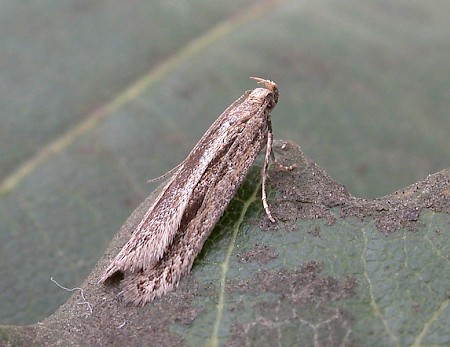Larva: (description Ian F. Smith):Foodplant: Ulex europaeus (gorse) and Cytisus scoparius (broom) inside unopened flower bud. Also reported on Lupinus arboreus, (tree lupin) on leaflet sown into pod. April to May or June.
Intermediate instar larva
Length: 7 mm, April.
Head: Pitchy black.
Prothoracic shield: Shiny black, divided by yellowish medial line.
Thoracic legs: Translucent greyish brown with black markings.
Body: Yellow.
Spiracles: Brownish black.
Pinacula: Small, prominent, shiny brown-black. Large grey prespiracular pinaculum and subventral pinaculum on prothorax (T1).
Setae: Transparent colourless.
Anal plate: Shiny light brown.
Prolegs: Coloured as abdomen with brown crochets.
Late instar larva
Length: 8mm, April.
Head: Pitchy black.
Prothoracic shield: Shiny black, divided by whitish medial line.
Thoracic legs: Translucent greyish brown with black markings.
Body: Yellowish white with pale pinkish trapezium on dorsum of each segment. (MBGBI 4(2) states body is dull green, but in three rearings for this description, green was not observed.)
Spiracles: Brownish black.
Pinacula: Small, prominent, shiny brown-black. Large grey prespiracular pinaculum and subventral pinaculum on prothorax (T1);
Setae: Transparent colourless.
Anal plate: Shiny light brown.
Prolegs: Coloured as abdomen with brown crochets.


 UKMoths
UKMoths 



